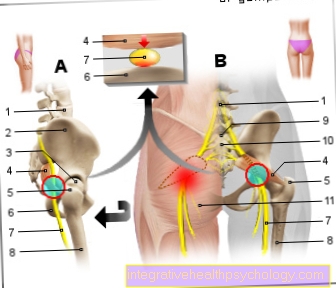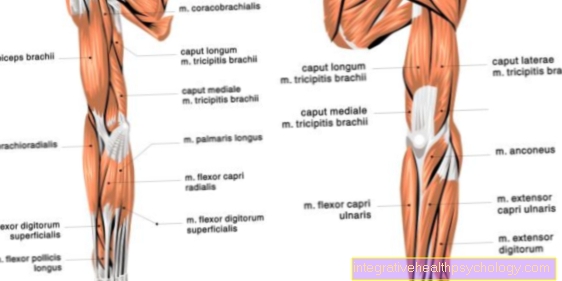Beta alanine
introduction
Beta alanine is a non-essential (naturally occurring in the body or synthesized by the body), non-proteinogenic amino acid and an isomer of the amino acid alpha-alanine. Beta alanine is the precursor of the peptide L-carnosine. L-carnosine occurs primarily in nerve and muscle tissue and increases performance there by counteracting over-acidification of the muscles, delaying the exhaustion of the muscles and improving the ability to contract. Beta alanine is therefore primarily known as a dietary supplement in the field of sports.

Function and effect
In order to understand the function and effects of beta alanine, it is first important to understand how muscles work. When we use our muscles, no matter to what extent, the body has to fall back on energy sources. The first and probably best known of these is ATP (adenosine triphosphate). However, ATP is only available to a limited extent in the muscles and needs some time to be formed again. In order to still be able to do physical work, the body now has to fall back on energy reserves. These are available as glycogen (storage form of carbohydrates) and triglycerides (fat reserves).
So when the ATP stores are used up, the so-called glycolysis starts relatively quickly. This is a process of breaking down glycogen in which energy-rich phosphates and carbohydrates are provided without oxygen. Since there is no oxygen, more lactic acid is formed in the muscle cells. Over-acidify the muscles. Under these circumstances, the muscles can no longer work, so that activity would come to a standstill. This is where beta alanine intervenes. As already mentioned, it is synthesized in the body to form L-carnosine, among other things. L-carnosine, in turn, prevents the pH level from falling and thus an over-acidification of the muscles or delays it. The athlete can train longer. In addition to the positive properties in sports, beta alanine is also used for other ailments or clinical pictures. These include, for example, psychosomatic disorders and anxiety.
You may also be interested in this topic: Amino acids and exercise
Side effects of beta alanine
Beta alanine is generally a very well tolerated amino acid. As beta alanine is naturally produced by the body, in rare cases symptoms such as abdominal pain or other mild gastrointestinal complaints may occur when taking high doses for the first time. Despite the good tolerability, there are typical side effects, especially with accidental overdosing.
-
Paresthesia: This is understood to be abnormal sensations in the skin. In the case of beta alanine, these are mainly scalp tingling or slight itching. Symptoms are caused by a short-term increase in histamine (a waste product from the formation of L-carnosine). To avoid this, it is advisable to divide the beta alanine dose into several individual doses.
-
Taurine deficiency: Taurine and beta alanine share the same transport route in the body. Constant administration of beta alanine can lead to competitive behavior and thus to constant depletion of the taurine stores, since beta alanine competitively inhibits taurine. However, this is only a cause for concern if an overdose of beta alanine is taken permanently.
Similar topics: Leucine
Who is beta alanine suitable for?
Beta alanine is converted into L-carnosine by the body with the help of histamine, which, as I said, prevents the muscles from becoming too acidic. This is not only beneficial for a short-term increase in performance, but also for interval training. Basically, athletes in particular benefit from beta alanine supplementation. However, as the number of studies on beta alanine continues to expand, taking beta alanine as a supplement can also be beneficial for other groups of people. Other areas in which beta alanine has a positive effect could be, for example, the following:
- Anti aging
- Combinations with other supplements such as creatine
- mental illness
- Anxiety
Due to the high demand and the advancement of science, more and more tests and studies related to beta alanine and other amino acids are being carried out to prove its effectiveness and better inferring its effects.
also read: Creatine cure
Beta alanine for muscle building
The benefits of beta alanine for muscle building result from the mechanism of action and the function of the amino acid. In this context, beta alanine can be called a prodrug, since it is not beta alanine itself but the L-carnosine synthesized from it that is responsible for the positive effects. As already mentioned, under normal training conditions, over-acidification of the muscles occurs for a short or long-term, and the associated rapid drop in performance. By taking beta alanine, the L-carnosine levels increase, which absorb the increased H + ion concentration, which is responsible for the drop in the pH value. In this context, L-carnosine serves as a buffer that makes the muscles more efficient. Regardless of the pH-stabilizing effect of beta alanine, the end product L-carnosine is said to have other muscle building effects. This includes:
- Binding and elimination of free radicals that lead to cell fatigue
- Activation and regulation of the sarcoplasmic reticulum, which plays a crucial role in muscle contraction.
- Enzyme regulator
- Vasodilation in connection with nitrogen
You can find more on this topic under: Amino acids for muscle building
Products
Like various other supplements, beta alanine is available in different dosage forms. The most famous and popular are powders and capsules. The decision whether powder or capsule is irrelevant for the effect, however, there are various advantages of the two dosage forms.
- Powder: The beta alanine powder is usually much cheaper than the capsules and can be dosed individually. It is important to store the powder properly, as beta alanine is hygroscopic, which means it binds water from the air, which can lead to clumping.
- Capsules: The Beta Alanine capsules are easy to use and can be conveniently taken anywhere. Due to the gelatin coating, you do not notice the taste of the powder itself and the hygroscopic effect is bypassed. These advantages are also reflected in the price of the capsules.
There are differences in quality for both the powder and the capsules. It mainly depends on the raw materials contained and impurities. It is very helpful when the various manufacturers provide analyzes of the products on their websites. The only patented beta alanine that is used in Germany is Carnosyn®.
Similar topics:
- BCAA
- Glutamine
Consumption recommendations
Beta alanine begins to work shortly after ingestion. It is therefore advisable to take it about 30 minutes before the start of training. Usually 4-5g beta alanine are then taken. Due to the high dosage, the paresthesias already mentioned can occur. It is therefore more sensible to take beta alanine for a period of 4-10 weeks, since it has been proven that the L-carnosine levels are increased and the desired effects set in during this time. With long-term use, it makes sense to divide the dose into several single doses. If possible, this method should leave a gap of 3-4 hours between doses. This not only reduces side effects, but also significantly improves the formation of L-carnosine.
Another positive influence is the simultaneous intake of beta alanine and food. The question of the perfect time to take beta alanine can therefore not be clearly clarified. Taking beta alanine before training has been shown to have the desired effect, but side effects may have to be accepted. In the event of uncertainty or concerns, long-term intake divided into several single doses is more advisable. Ultimately, the decision to take must be made individually.
dosage
There are no clear guidelines for the dosage of beta alanine. The dosage information provided by the various manufacturers is therefore a guideline. Normally these are between 4-6g beta alanine per day. As described above, there are basically two different dosage schemes:
-
Taking the full dose: The full daily dose of beta alanine is taken 30-60 minutes before exercise. The advantage here is that L-carnosine is available directly during training.
-
The intake is divided into several single doses: In order to avoid the typical side effect of a large dose of beta alanine, it is recommended to split the total dose into up to 4 single doses. Ideally, there should be an interval of 3-4 hours between the individual doses.
The dosage is usually taken as a cure, which means over a period of at least 4-10 weeks. A significant increase in endurance and training performance can be demonstrated after just 3 weeks. After about 3 months, the L-carnosine content reaches its optimum value. This is the time to take a break from supplementation. The length of the break is between 8-9 weeks.
also read: Supplements
Foods with alanine
Alanine occurs naturally in many foods. Various food categories with the corresponding alanine content per 100g raw mass are listed below:
- unsweetened corn flakes: 800mg
- Oatmeal: 790mg
- Whole grain bread: 320mg
- Soybeans: 1530mg
- Lentils: 1290mg
- Parsley: 314mg
- Peanuts: 810mg
- Avocado: 175mg
- Banana: 46mg
- Brie: 910mg
- Edam: 890mg
- Yogurt: 170mg
- Roast beef: 1720mg
- Pork: 1540mg
- Haddock: 2160mg
- Redfish: 1680mg
- Pollack: 1230mg
- Butter: 28mg


















.jpg)





.jpg)




